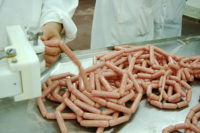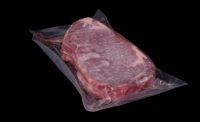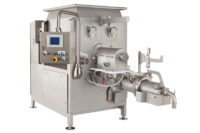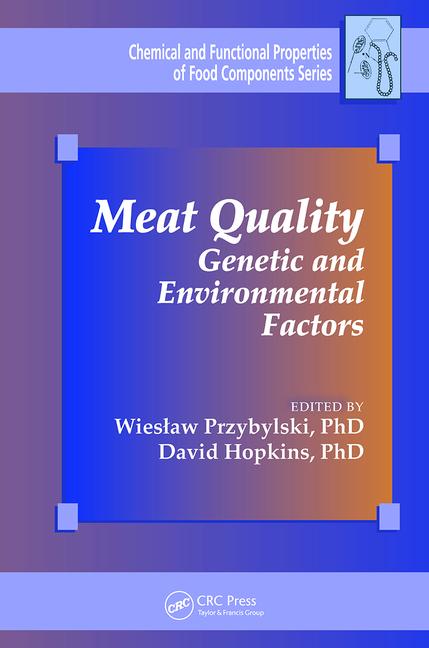The upkeep of grinding and stuffing equipment is at the forefront of efficient and effective meat and poultry processing. For example, the maintenance of grinder knives and plates is of upmost importance. Sharp knives and plates are necessary to obtain a clean cut of meat particles, which lessens the damage to the fat cells and thwarts temperature rise of the meat during grinding. Dull knives also result in strands of collagen passing through the plate which can lead to quality problems such as corkscrewing and peeling problems with linked sausages. Knives and plates also need to be well-maintained to avoid metal contamination to ground products.
Tremendous advancements have been made in the ability to maintain these pieces of equipment during the last couple of decades, but challenges still remain.
“Grinders are notoriously hard to clean, particularly the die plates and the fluted grinder throats,” says Lynn Knipe, associate professor at The Ohio State University in Columbus, Ohio. “Stuffing horns, particularly the smaller-diameter horns can be very difficult to clean and sanitize.”
Joe Cordray, professor of animal science at Iowa State University in Ames, Iowa, says that maintaining grinders and stuffers can be relatively easy, but maintenance is a matter of due diligence.
“You've got to make sure when you disassemble the equipment, you clean it and you let it dry out,” he explains. “Then one of the things in helping maintaining all that equipment is, when you reassemble it, that it is put back together correctly, so the parts operate together as they were designed and that everything flows correctly.”
For grinders, the big challenges are keeping grinder knives sharp and keeping non-meat items, particularly metal, out of the augers and grinder heads, Knipe says.
For knives and plates that need to be sharpened, after sharpening, each plate should be matched with a knife, he explains. The pair should be kept together until the next time they are sharpened.
Regarding non-meat materials, such as metal and plastic, these materials not only will cause a problem for the meat that they get into, they also can cause serious and expensive damage to pieces such as grinder augers and throats, Knipe says.
“Grinder parts should be monitored regularly for unusual wear as a GMP, and all meat going into a grinder should be checked either visually or by metal detectors, as a means to prevent unwanted materials getting into the grinding system,” he says.
Most grinders operate on metal-to-metal contact at some point in time. It’s very important that the grinder is assembled to the right degree of tightness and that lubrication is used. The lubricant will help ease the metal-to-metal contact when that machine first starts up until meat starts to flow through it, Cordray explains. For stuffers, a big challenge is maintaining the stuffing horns.
“Stuffing horns with nicks and dents can cause [myriad] stuffing problems, including torn casings, fat-smeared casings and corkscrewing,” Knipe says. “My graduate school advisor, Bob Rust, used to say that stuffing horns should be handled like they were made of glass, not rubber.”
Even though stuffers are available in a large range of different types, all of them have parts of the equipment that experience some wear over time.
“You need to check to make sure that your clearances are staying appropriately,” Cordray says. “One of the biggest things to make sure you get good, long-term service out of them is to make sure that when they are assembled that they are assembled correctly.”
Better performance
Advancements are being made to improve the ability of these pieces to be cleaned and sanitized as well. To start with, equipment suppliers are using higher-quality metals for stuffers and grinders, Cordray says. In addition, equipment is machined better, so fewer nooks and crevices are present for microorganisms to harbor in them.
“If you take a look at stuffers and grinders, the cabinets that encase the motors and the controls are getting built and sealed up better than they used to be,” Cordray says. “There is not the opportunity for microorganisms and food sources like scraps of meat to get down inside of the machines and become harborage spots for microbial growth. That’s one thing that equipment manufacturers have become extremely cognizant of — the importance of the ability to clean the machine and the importance that the machine does not represent any place as a harborage site. We’re interested not only in the design of the actual augers or the places where the meat flows through the stuffer, but also other parts on the cabinet, that they don’t become a harborage place.”
For better maintenance and operating efficiencies, any time a processor goes to purchase stuffing and grinding equipment, they would want to make sure that they had the grinder and stuffer matched to the capacity of products that they wanted to process.
“You don’t want to underwork the equipment or overwork the equipment, so to match the equipment with the job that you are going to do is very important,” Cordray says. “Obviously you would want to look and make sure the equipment that you are using — if you are purchasing used equipment, for instance — that’s in a good state of repair. All those pieces of equipment have tolerances by the manufacturer, and those should be checked. The knives, plates and grinders should be inspected on a daily basis, but they should be on a periodic basis for the knives to be replaced and the plates to be sharpened to always maintain them in optimum working order.”
Another consideration for equipment performance is that in order for many grinders and stuffers to work properly, most of them have certain ranges that the meat temperature should be.
“If you have your grinder set up and [it] is in good shape, but you are trying to grind meat that is too warm, you won’t get the same type of particle definition if it’s colder,” Cordray says.
In addition, processors should always make sure that meat is in the proper state to be used for the grinder that the processor is using, Cordray adds. For instance, in some file of grinds, processors might use a smaller grind, like a 1/8-inch size, which might be typical of what ground beef would be ground through in the final particle production. But if a processor starts out with big chunks of meat and tries to force it through that small of plate to begin with, it doesn’t work very well. The processor is trying to break down the particle too much, Cordray explains.
Processors instead need to do an initial particle reduction, in which one might use a grinder that has a hole size of 1 inch or larger to pre-grate the product and mix it up. The meat then can be run back through a second grinder or the same grinder set up differently to reduce it down to the final desired particle size, he says.







